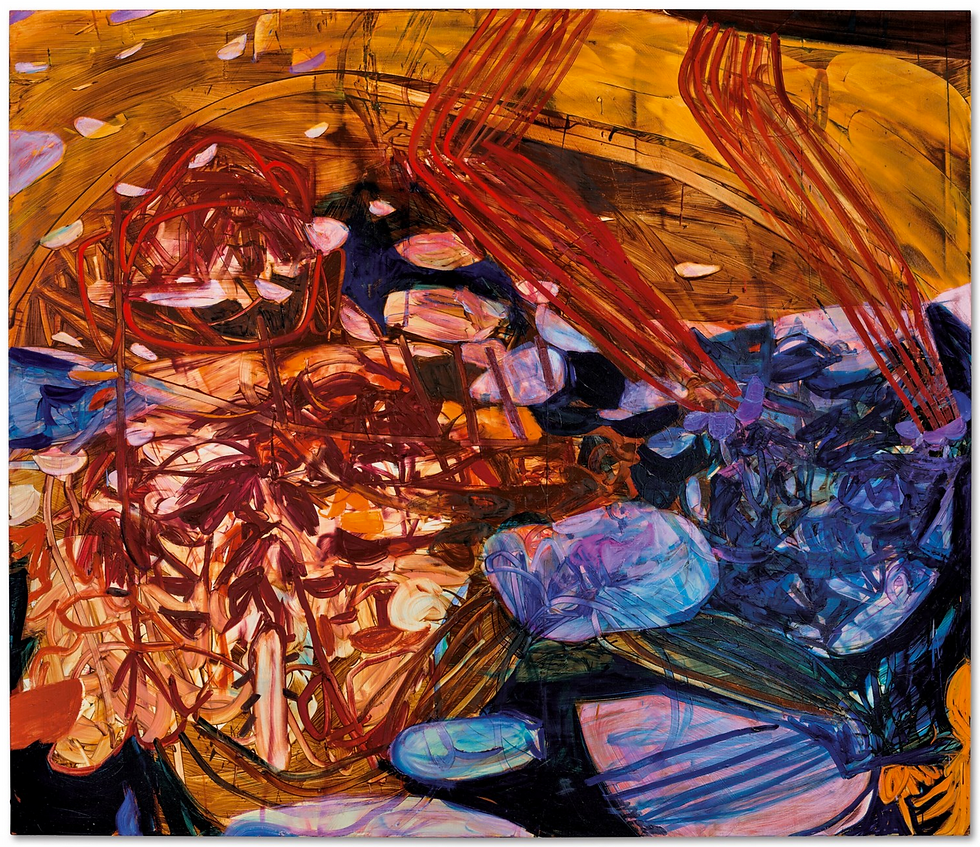No one could have predicted that the auction sales in London this Spring would be held in such a troubled context. Given the return of war in Europe with the invasion of Ukraine by Russia, some were concerned about its effect on the art market. And yet, the latter once again proved its solidity. Christie’s even recorded its highest-grossing London sales ever, while Sotheby’s surpassed its 2019 pre-crisis level. Together with Phillips—which had a more contrasted month—the auction houses returned with a series of new hybrid sales combining contemporary and post-war artworks with modern pieces, which proved beneficial for both segments of the market.


Christie’s inaugurated the week with its 20th/21st evening sale spreading on two continents, between London and Shanghai. The session began at Christie’s new space in the Chinese city with 20 lots mainly from Western blue-chip painters and rising stars from the new generation. The priciest work was a $14.9 million Basquiat painting from 1982. It was soon followed by Amoako Boafo’s third all-time auction record: a $1.39 million colorful portrait from 2019. A midsize canvas by Scott Kahn was acquired for an impressive $900,000, his second best result at auction yet.

But the most exciting part of the sale took place at Christie’s headquarters in London, where a series of million-dollar records were broken by young painters. For instance, a canvas by Jadé Fadojutimi sold for $1.2 million, soon followed by a beautiful $2.5 million painting by Flora Yukhnovich and a $1.6 Amoako Boafo portrait. The auction house also presented a handful of major modern and post-war works that evening, the first of which was a beautiful Franz Marc cubist painting acquired for a whopping $57 million—enough to top the sale. The second highest result was made for a Francis Bacon triptych which was bought for $51 million. Lucian Freud completed the podium with a $20 million portrait.

Christie’s sale had one last section entirely composed of surrealist works, with major paintings by René Magritte, Max Ernst and Joan Miró to name but a few. In overall, the evening sale generated an outstanding $334 million, which is by far its all-time best revenue for a London auction.

Last but not least, Christie’s organized a less exciting post-war and contemporary session on the following day. There were a handful of remarkable results during the auction though such as a small yellow pumpkin by Yayoi Kusama that was acquired for an eye-popping $1.1 million—her all time high for this size. Speaking of small-sized works, a 23 centimeters embroidery by Alighiero Boetti fetched a remarkable $250,000—a record-breaking price.
Once again this March, Sotheby’s began its evening session with its « Now Evening » section filled with fresh new artworks by rising artists, mostly from the new generation. The first lot of the sale was a beautiful canvas by Rachel Jones, who made her auction debut that evening. It was eventually acquired for an impressive $825,000. New records were then set for Shara Hughes, Flora Yukhnovich and Hilary Pecis. The three young women painters sold three million-dollar canvases for respectively $2.7 million, $3.6 million and $1.2 million.

The main section of the sale was mainly focused on major modern paintings, the first of which was a beautiful Magritte acquired for a whopping $79 million, which became his best auction result yet. The podium of the sale was completed by a $19 million landscape by David Hockney and a $16 million portrait by Picasso. Among the other remarkable lots was a 2017 Infinity Net painting by Yayoi Kusama that sold for $3 million. It became her second best result for a painting from this series made during the 2010s.
Sotheby’s Evening sale totaled $297 million (£221 million), thus surpassing its 2019 pre-pandemic level. Back then, the auction house had generated £218 million between its Modern, Surrealist and Contemporary sales. Overall, it was Sotheby’s best March auction since 2018, which already was a record-breaking year for the art market.

Phillip’s had a more difficult month in the heart of the Ukrainian crisis as it had to face threats of a boycott due to the nationality of its owners. Indeed, the auction house was bought by the Mercury Group—a Russian-owned luxury company—back in 2008. As a consequence the group, which has no link with the Kremlin, decided to give the net proceeds of its buyers’ and sellers’ premiums to the Ukrainian Red Cross.

Despite the controversy, Phillip’s evening sale generated a solid $40 million, thanks to a series of excellent results by young artists and more established ones alike. For instance, the first lot was a $587,000 painting by Lauren Quin, who was making her auction debut that evening. Another record was set for Issy Wood with a dark velvet painting acquired for an impressive $587,000. Still among the new generation, Harold Ancart recorded his best auction result for a work below two meters. Indeed, one of his psychedelic landscapes sold for $671,000. The top lot of the sale was a seven-figure David Hockney soon followed by a $4.2 million Cecily Brown. Günther Förg also performed really well with a $1.1 million spot painting—his third best result for a canvas from this series—not far from an abstract painting by Daniel Buren acquired for 1.1 million as well—his second all time auction record.

Although Sotheby’s, Christie’s and Phillip’s issued statements about how sad and preoccupied they were amid the current crisis, its impact on the art market remained almost insignificant this March. This is mainly due to the very limited influence of Russia on the global art market. Furthermore, the three main auction houses can rely on a strong international demand, especially from Asia which once again accounted for a third of the bids.

Comments